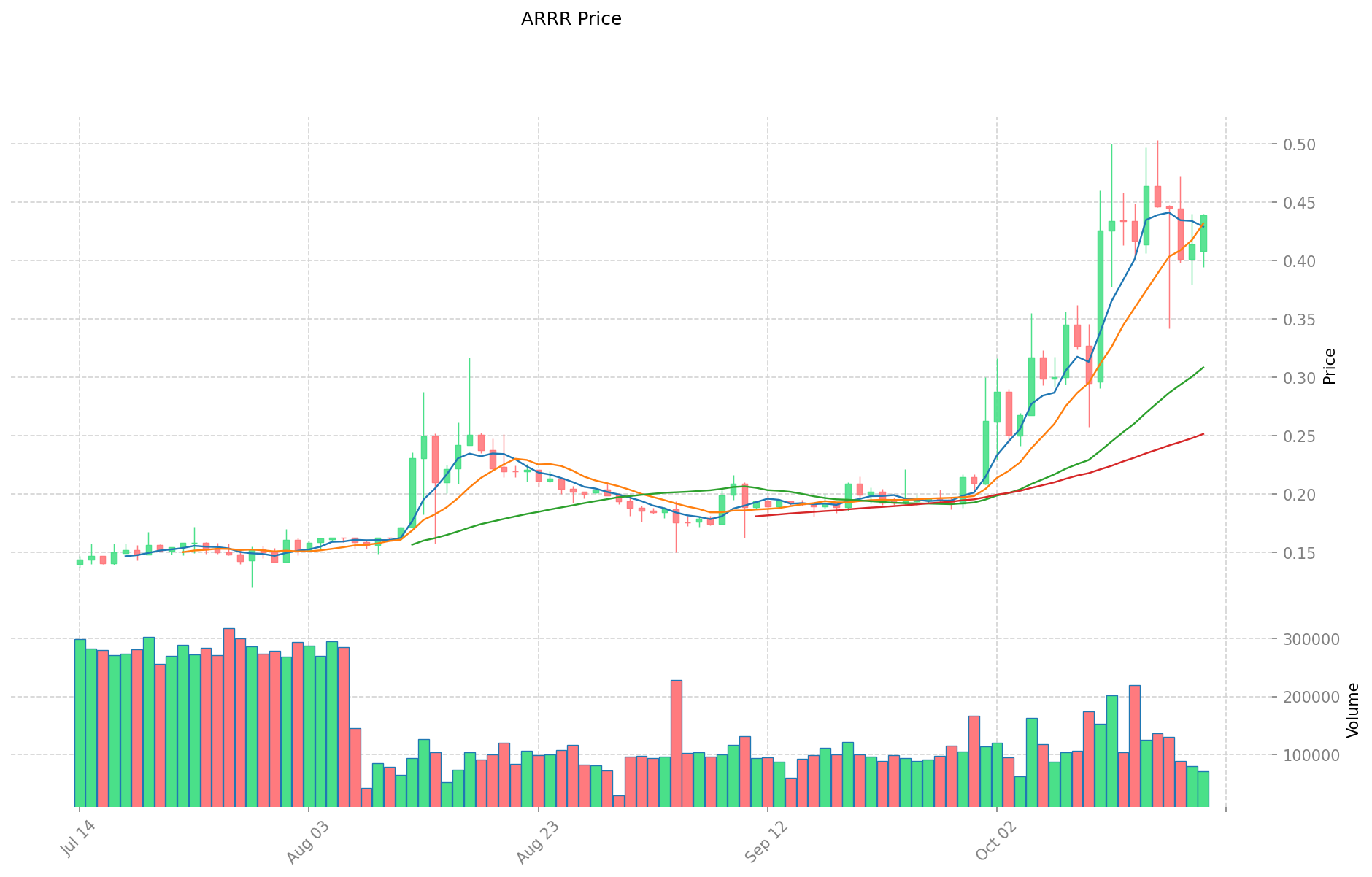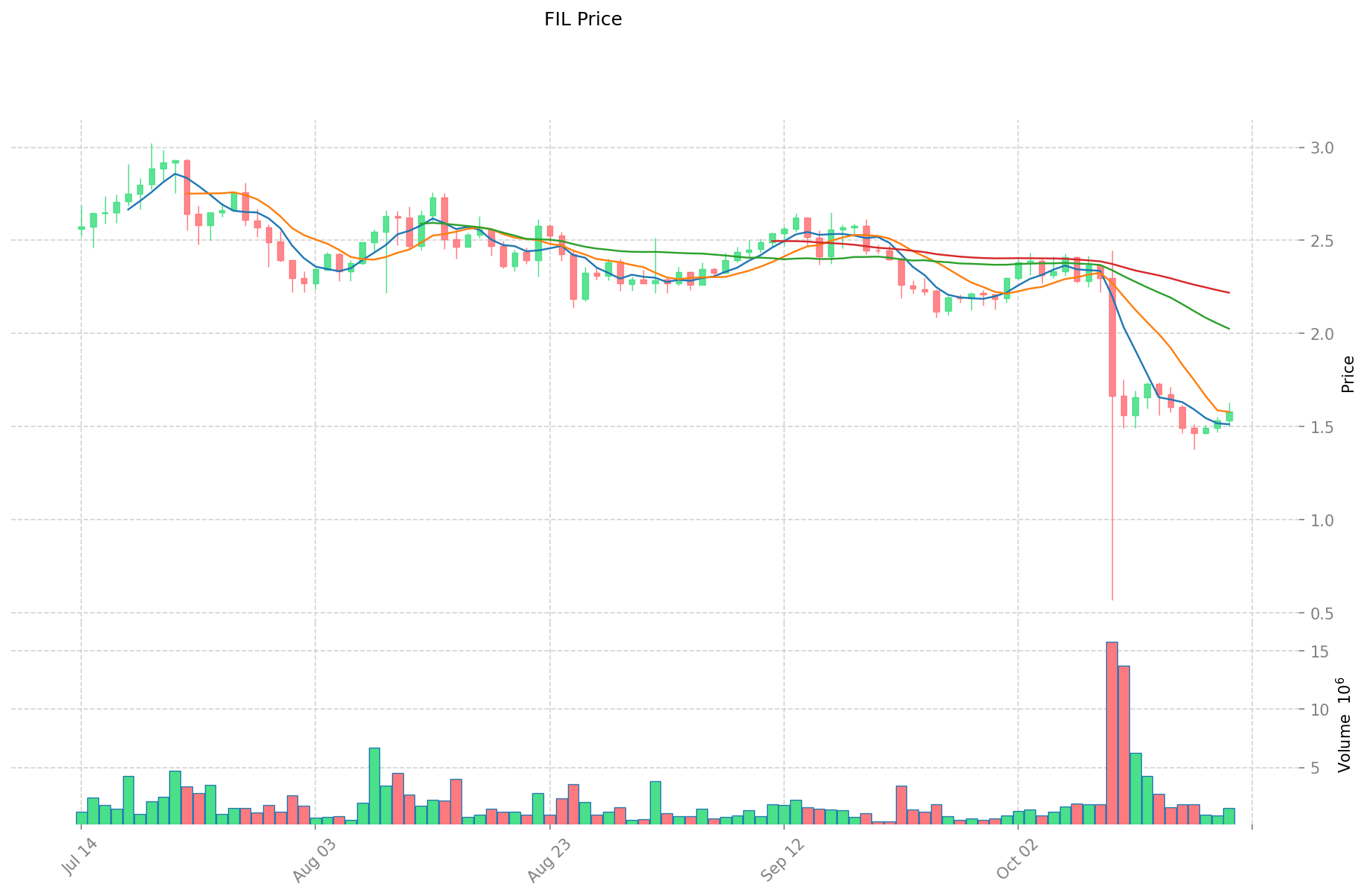ARRR vs FIL: Comparing Privacy-Focused Cryptocurrencies and Their Potential Impact on Digital Transactions
Introduction: Investment Comparison of ARRR vs FIL
In the cryptocurrency market, the comparison between Pirate Chain (ARRR) and Filecoin (FIL) has been an unavoidable topic for investors. The two not only show significant differences in market cap ranking, application scenarios, and price performance but also represent different cryptocurrency positioning.
Pirate Chain (ARRR): Since its launch in 2018, it has gained market recognition for its focus on privacy and security in cryptocurrency transactions.
Filecoin (FIL): Introduced in 2017, it has been hailed as a decentralized storage network, becoming one of the cryptocurrencies with significant global trading volume and market capitalization.
This article will comprehensively analyze the investment value comparison between ARRR and FIL, focusing on historical price trends, supply mechanisms, institutional adoption, technological ecosystems, and future predictions, attempting to answer the question most concerning to investors:
"Which is the better buy right now?"
I. Price History Comparison and Current Market Status
ARRR (Pirate Chain) and FIL (Filecoin) Historical Price Trends
- 2021: ARRR reached its all-time high of $16.76 on April 24, 2021.
- 2021: FIL hit its all-time high of $236.84 on April 1, 2021.
- Comparative analysis: During the 2021 bull market, ARRR rose from its low of $0.00797788 to $16.76, while FIL climbed from its low to $236.84.
Current Market Situation (2025-10-21)
- ARRR current price: $0.4387
- FIL current price: $1.578
- 24-hour trading volume: ARRR $29,637.557352 vs FIL $2,396,407.05845
- Market Sentiment Index (Fear & Greed Index): 29 (Fear)
Click to view real-time prices:
- Check ARRR current price Market Price
- Check FIL current price Market Price


II. Core Factors Affecting the Investment Value of ARRR vs FIL
Supply Mechanisms Comparison (Tokenomics)
- ARRR: Limited supply model with a cap of 200 million coins
- FIL: Decreasing supply mechanism with scheduled token releases
- 📌 Historical Pattern: Supply mechanisms drive cyclical price movements, with limited supply assets typically showing stronger price appreciation during market uptrends.
Institutional Adoption and Market Applications
- Institutional Holdings: FIL appears to have greater institutional interest due to its infrastructure focus
- Enterprise Adoption: FIL shows stronger enterprise adoption in decentralized storage solutions, while ARRR focuses on privacy-oriented transactions
- Regulatory Attitudes: Privacy coins like ARRR face stricter regulatory scrutiny in many jurisdictions compared to utility tokens like FIL
Technical Development and Ecosystem Building
- FIL Technical Development: Continuous improvement of decentralized storage infrastructure and data retrieval mechanisms
- Ecosystem Comparison: FIL has developed a broader ecosystem around data storage and retrieval services, while ARRR maintains focus on privacy-oriented transactions
Macroeconomic Factors and Market Cycles
- Inflation Environment Performance: Limited supply assets like ARRR may theoretically offer better inflation resistance
- Macroeconomic Monetary Policy: Interest rate changes and USD strength impact both assets, with risk-off environments typically challenging for all crypto assets
- Geopolitical Factors: Privacy demands may increase ARRR usage in certain jurisdictions, while data sovereignty concerns may benefit FIL's decentralized storage model
III. 2025-2030 Price Prediction: ARRR vs FIL
Short-term Prediction (2025)
- ARRR: Conservative $0.33803 - $0.439 | Optimistic $0.439 - $0.50046
- FIL: Conservative $1.24899 - $1.581 | Optimistic $1.581 - $2.13435
Mid-term Prediction (2027)
- ARRR may enter a growth phase, with estimated price range $0.344969712 - $0.689939424
- FIL may enter a consolidation phase, with estimated price range $1.5881263575 - $2.67876735
- Key drivers: Institutional capital inflow, ETF, ecosystem development
Long-term Prediction (2030)
- ARRR: Base scenario $0.742443306858 - $0.85004595504 | Optimistic scenario $0.85004595504 - $1.06169392880694
- FIL: Base scenario $2.732342697 - $3.30613466337 | Optimistic scenario $3.30613466337 - $3.6698094763407
Disclaimer: The above predictions are based on historical data and market analysis. Cryptocurrency markets are highly volatile and subject to rapid changes. These projections should not be considered as financial advice. Always conduct your own research before making investment decisions.
ARRR:
| 年份 | 预测最高价 | 预测平均价格 | 预测最低价 | 涨跌幅 |
|---|---|---|---|---|
| 2025 | 0.50046 | 0.439 | 0.33803 | 0 |
| 2026 | 0.5448868 | 0.46973 | 0.3569948 | 7 |
| 2027 | 0.689939424 | 0.5073084 | 0.344969712 | 15 |
| 2028 | 0.85004595504 | 0.598623912 | 0.43100921664 | 36 |
| 2029 | 0.760551680196 | 0.72433493352 | 0.6374147414976 | 65 |
| 2030 | 1.06169392880694 | 0.742443306858 | 0.65335011003504 | 69 |
FIL:
| 年份 | 预测最高价 | 预测平均价格 | 预测最低价 | 涨跌幅 |
|---|---|---|---|---|
| 2025 | 2.13435 | 1.581 | 1.24899 | 0 |
| 2026 | 1.9691355 | 1.857675 | 1.50471675 | 17 |
| 2027 | 2.67876735 | 1.91340525 | 1.5881263575 | 21 |
| 2028 | 3.168599094 | 2.2960863 | 1.928712492 | 45 |
| 2029 | 3.87992662974 | 2.732342697 | 1.93996331487 | 73 |
| 2030 | 3.6698094763407 | 3.30613466337 | 2.5126623441612 | 109 |
IV. Investment Strategy Comparison: ARRR vs FIL
Long-term vs Short-term Investment Strategy
- ARRR: Suitable for investors focused on privacy features and potential for niche market growth
- FIL: Suitable for investors interested in decentralized storage infrastructure and broader ecosystem development
Risk Management and Asset Allocation
- Conservative investors: ARRR: 10% vs FIL: 90%
- Aggressive investors: ARRR: 30% vs FIL: 70%
- Hedging tools: Stablecoin allocation, options, cross-currency portfolio
V. Potential Risk Comparison
Market Risk
- ARRR: Limited liquidity and higher volatility due to smaller market cap
- FIL: Susceptible to broader crypto market trends and competition in decentralized storage space
Technical Risk
- ARRR: Network scalability, maintaining privacy features
- FIL: Storage capacity growth, network stability
Regulatory Risk
- Global regulatory policies may have different impacts on both, with privacy coins like ARRR potentially facing stricter scrutiny
VI. Conclusion: Which Is the Better Buy?
📌 Investment Value Summary:
- ARRR advantages: Strong privacy features, limited supply model
- FIL advantages: Established ecosystem, institutional adoption, practical use case in decentralized storage
✅ Investment Advice:
- New investors: Consider a small allocation to FIL as part of a diversified crypto portfolio
- Experienced investors: Balanced approach with both ARRR and FIL, adjusting based on risk tolerance
- Institutional investors: Focus on FIL due to its broader adoption and infrastructure play
⚠️ Risk Warning: Cryptocurrency markets are highly volatile. This article does not constitute investment advice. None
VII. FAQ
Q1: What are the main differences between ARRR and FIL? A: ARRR focuses on privacy and security in cryptocurrency transactions, while FIL is a decentralized storage network. ARRR has a limited supply of 200 million coins, whereas FIL has a decreasing supply mechanism. FIL has broader institutional adoption and a more developed ecosystem, while ARRR caters to users prioritizing transaction privacy.
Q2: Which coin has shown better historical price performance? A: During the 2021 bull market, both coins saw significant gains. ARRR rose from $0.00797788 to $16.76, while FIL climbed to $236.84. However, as of 2025-10-21, both have experienced substantial declines, with ARRR at $0.4387 and FIL at $1.578.
Q3: How do the supply mechanisms of ARRR and FIL differ? A: ARRR has a limited supply model with a cap of 200 million coins, which could potentially drive price appreciation during market uptrends. FIL, on the other hand, has a decreasing supply mechanism with scheduled token releases, which aims to balance supply and demand over time.
Q4: What are the regulatory risks associated with ARRR and FIL? A: Privacy coins like ARRR face stricter regulatory scrutiny in many jurisdictions due to concerns about potential illicit use. FIL, as a utility token focused on decentralized storage, generally faces less regulatory pressure but is still subject to evolving cryptocurrency regulations.
Q5: Which coin is better suited for long-term investment? A: The choice depends on an investor's risk tolerance and belief in the underlying technology. FIL may be more suitable for those interested in decentralized storage infrastructure and broader ecosystem development. ARRR might appeal to investors focused on privacy features and potential niche market growth.
Q6: What are the price predictions for ARRR and FIL by 2030? A: Based on the provided predictions, by 2030, ARRR's base scenario price range is $0.742443306858 - $0.85004595504, with an optimistic scenario of $0.85004595504 - $1.06169392880694. For FIL, the base scenario is $2.732342697 - $3.30613466337, with an optimistic scenario of $3.30613466337 - $3.6698094763407. However, these predictions are speculative and should not be considered financial advice.
Q7: How should investors allocate their portfolio between ARRR and FIL? A: Conservative investors might consider allocating 10% to ARRR and 90% to FIL, while more aggressive investors could opt for 30% ARRR and 70% FIL. However, individual allocations should be based on personal risk tolerance and investment goals.
Q8: What are the key factors that could influence the future performance of ARRR and FIL? A: Key factors include institutional adoption, regulatory developments, technological advancements in their respective fields (privacy technology for ARRR and decentralized storage for FIL), market cycles, macroeconomic conditions, and the overall growth of the cryptocurrency ecosystem.
Share
Content